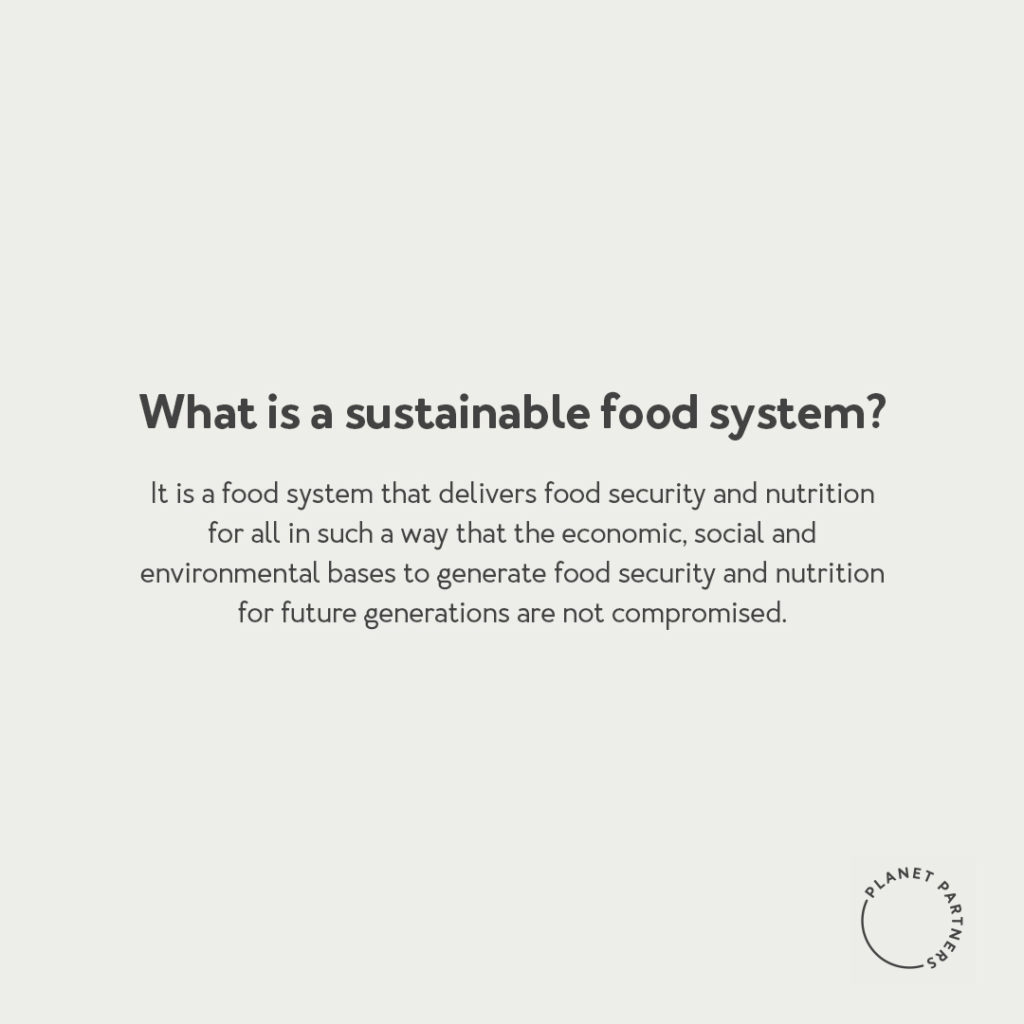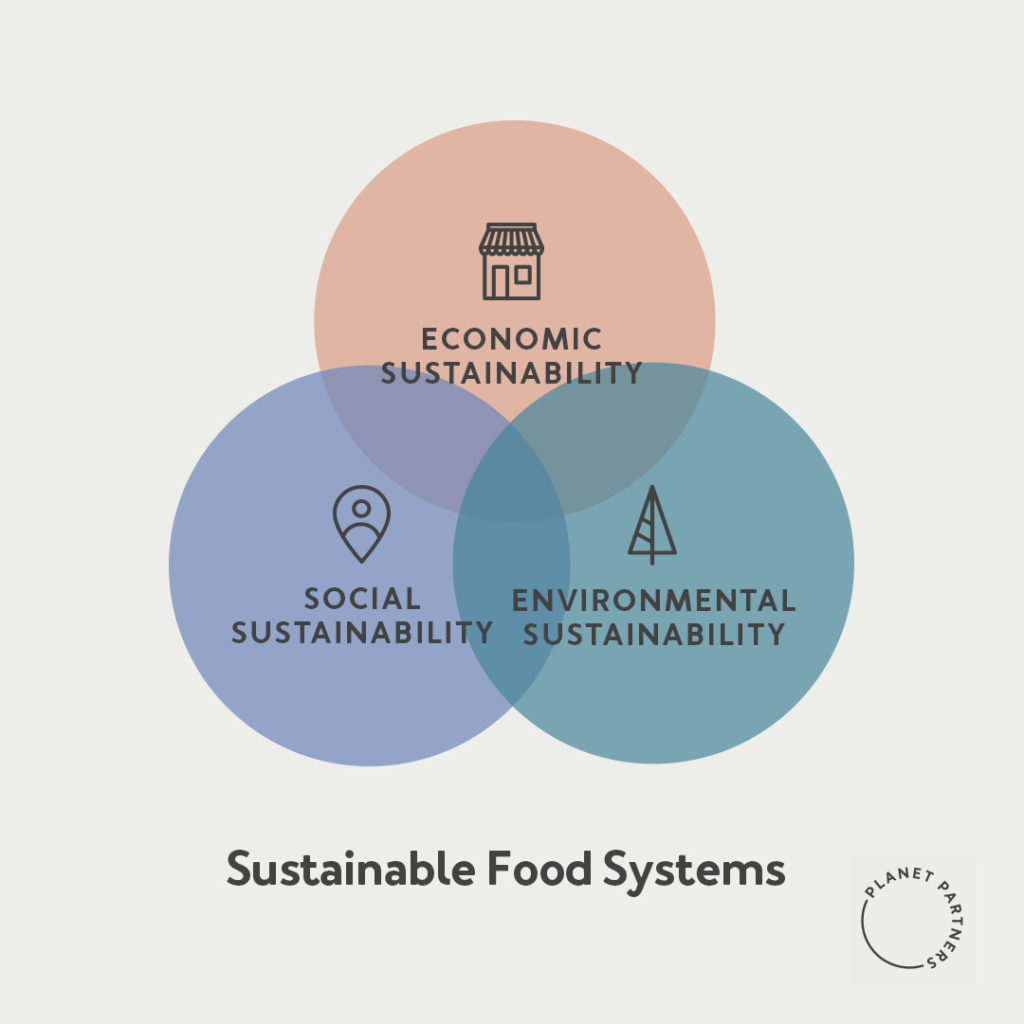Food — from production to disposal — is a dirty industry, and we’re here to show how you can help.
Agriculture is the leading contributor to the world’s non CO2 greenhouse gas emissions, coming in at massive 56%, while food systems emissions in general contribute to 16-22% of the world’s total greenhouse gas emissions. Did you know agriculture is also the leading cause for global deforestation, accounting for 75%?
Not only does the food industry produce a massive amount of emissions and have devastating environmental effects, but it contributes incredible amounts of waste.
About ⅓ of all food produced in the world is lost in the food supply chain, so only 66.6% is available to the consumer.
Most of the food loss in low-income countries happens during the storage, transport and processing levels, while the retail and consumer levels play the biggest role in food loss in high-income countries. The food waste in high-income countries at the retail and consumer level is 222 million tonnes/year, almost equal to the 230 million tonnes that make up the entire annual food production in Sub-Saharan Africa.
Almost a billion people in the world are going hungry, while ⅓ of the food we produce is lost. With current global trends in diets and population, we’ll need about 60% more food produced by 2050.
So, the problems are big for people and planet. It can be scary to take all of this in, but there’s hope for change. One of the solutions is the development of sustainable food systems.
Developing sustainable food systems is a fundamental shift in the way our food is produced, processed, transported and consumed and can help to relieve, and even reverse, the environmental damage that has already occurred.
What Are Sustainable Food Systems?
Before we dive into sustainable food systems, let’s get a basic understanding of food systems in general.
Food systems are made up of different industries, individuals and environmental components and how they’re involved in and affected by the production, processing, transportation, consumption and disposal of food. You can break food systems down into subsystems — like a farming system, food processing system, or waste management system — that interact with other systems, like energy, trade, and health systems.
So what’s a sustainable food system?

A sustainable food system is a food system that delivers food security and nutrition for all in such a way that the economic, social and environmental bases to generate food security and nutrition for future generations are not compromised.
For a food system to be sustainable, it:
- Promotes the health of all living things in the community during the entire food production cycle: cultivation, harvestation, processing, packaging, labeling, distribution, marketing, consumption, and disposal.
- Meets the food and nutrition needs of the people without damaging or neglecting the conservation, protection, and regeneration of natural resources, biodiversity and landscapes in the community, and around the world.
- Is able to address challenges, like climate change, and declining water and energy resources in sustainable, earth-first ways.
- Shows diversity in food production and disposal practices, and considers the impact and effectiveness of production and disposal practices locally and globally.
- Supports fair and economically balanced conditions for all community members, including farmers, workers, and consumers.
- Provides the community access to affordable food options that are both nutritious and culturally appropriate.
- Gives farmers, workers, and consumers insight into how their food is handled, and empowers all to actively discuss and participate in all stages of the food production cycle.
To sum it up, sustainable food systems are focused on providing economic, social and environmental sustainability.

Have you heard of the UN’s Sustainable Development Goals (SDGs)? They’re 17 global goals that are designed to set a “blueprint to achieve a better and more sustainable future for all.” These SDGs call for major transformations in agriculture and food systems to end hunger, achieve food security and improve nutrition by 2030.
For these SDGs to come to life, the global food system needs to be reshaped to be more productive, more inclusive of poor and marginalized populations, environmentally sustainable and resilient, and able to deliver healthy and nutritious diets to all.
Overhauling the way our food systems work on a global scale is a complicated task. These are complex and systemic challenges that need collaboration and action at the local, national, regional and global levels.
You Can Help Create A Sustainable Food System
Even though food systems need to be overhauled from a global and government level, you can take small steps in your local food system that add up to big change.
Here are some everyday ways that you can live a little more environmental-ish, and contribute to sustainable food systems.
1. Choose Sustainable & Support Local
Buy from local, sustainable farms and farmer’s markets, and companies that promote sustainable practices (like Nature’s Path). Dive into local, national and global laws around farming, food production, and sustainable agriculture.
Try looking into urban agriculture, community gardens, and the rights of small, independent farmers — find out what the issues are in your local area, and in the world. When you’re shopping, try to buy in-season fruits and veggies that are grown in your country.
2. Fight Food Waste
We know it’s tempting to buy two week’s worth of groceries in one trip, but stocking up on produce usually ends up contributing to throwing out half your fruit and veggies. Try buying what you need for a few days, and taking multiple trips to restock your produce.
Are your fruit and veggies going soft in your fridge? Make use of what you have instead of chucking them. Chop and freeze smoothie ingredients, or try freezing pears and apples for future baking. Some produce, like carrots, can be blanched and frozen. Other veggies can be thrown into a stew or soup.
Try buying produce items that are on sale — these usually are set to expire in a few days — and work them into your meals that day, or freeze them for later. So much food is wasted in grocery stores simply because it isn’t purchased.
3. Avoid And Prevent Antibiotic Use In Livestock
Around 80% of all antibiotics sold in the US are given to livestock to increase growth and prevent diseases caused by the crowded, unsanitary conditions they’re kept in. Not only is this harmful to the animals, but it also impacts the humans eating antibiotic-laced meat and dairy. Avoid meat and dairy products that aren’t clearly labeled as antibiotic-free.
You can also support organizations who are advocating for responsible use of antibiotics on animals (that means when only medically needed), like Animal Welfare Approved (AWA), Center for Food Safety, Food and Water Watch, Friends of the Earth International, United Nations Food and Agriculture Organization (FAO), and Meatless Monday.
4. Be Mindful Of Your Diet’s Carbon Footprint
More than half of the greenhouse gases produced by the food industry come from animal products, and of that 58%, 50% of all farm animal emissions come from beef and lamb. But for some food products, the carbon footprint varies a lot depending on how sustainable the food system is surrounding it.
For example:
- Farmed prawns actually have a higher carbon footprint than the least sustainable lamb product.
- A chocolate bar sourced from land that was deforested rainforest has a greater carbon footprint than a serving of the most sustainably sourced beef.
- A portion of the highest impact vegetable-based protein still has less impact than the lowest impact animal protein.
Check out the full article from BBC on the topic.
While reducing the amount of meat you eat is definitely going to be good for the earth, it’s important to do your homework when it comes to all of your food choices.
5. Educate Yourself
Keep doing what you’re doing right now — learning about sustainable food systems. Whether you’re reading blogs and articles or joining a local advocacy group, the more you know about the issue, the better prepared you’ll be to make earth-first food choices that better your own life, and food systems around the world.
Want to see what companies are doing to promote a sustainable food system? Check out our interview with Nature’s Path — pioneers of organic food and farming, and producer of over 150 food products (known for their delicious breakfast cereal) — as we chat with them about sustainability in the food industry.

